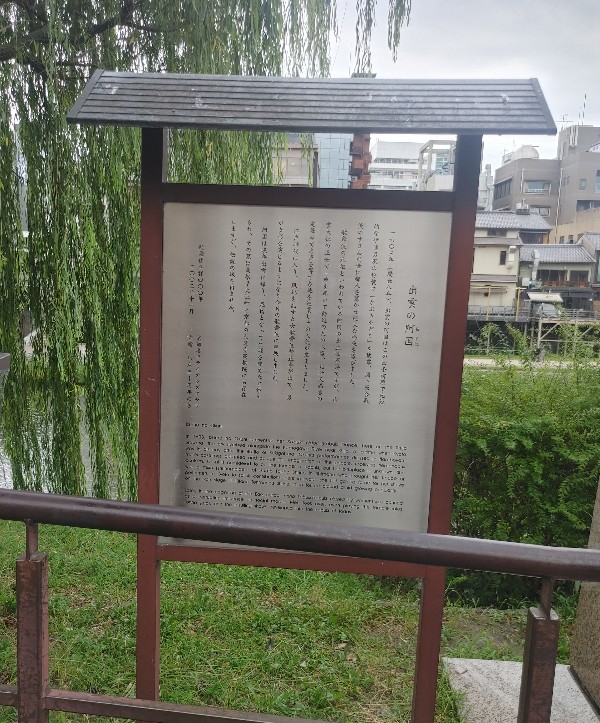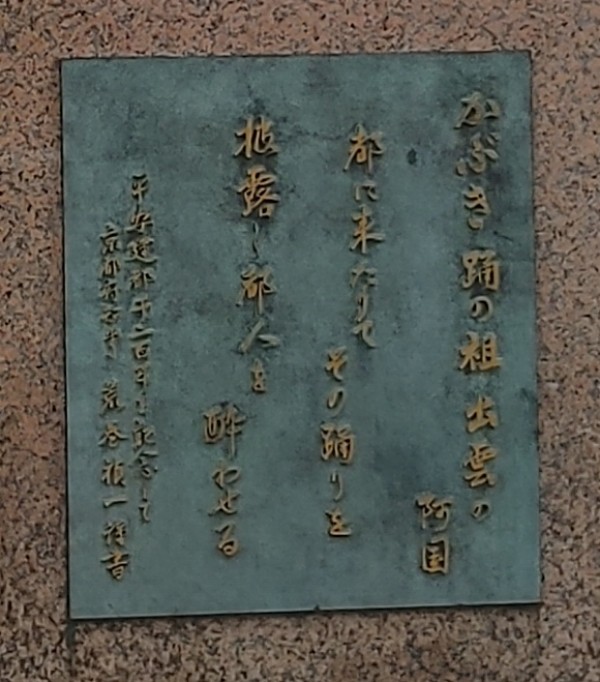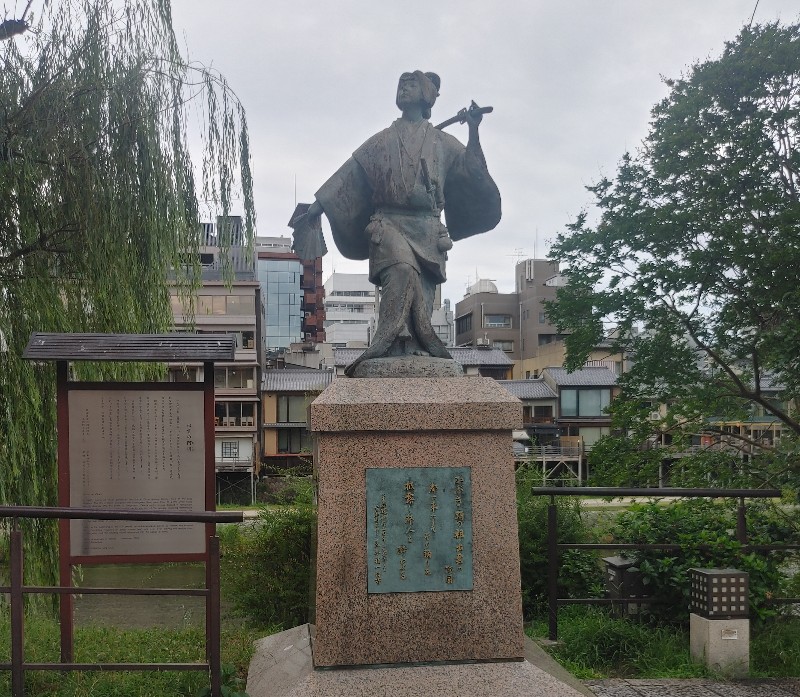 出雲の阿国
出雲の阿国(~おくに)
1603年(慶長8年)、出雲の阿国はこの四条河原で先鋭的な伊達男風の扮装で「かぶきをどり」を披露、関ヶ原合戦後のすさんだ世に都人を驚かせ絶大な喝采を浴びました。
歌舞伎の元祖といわれている阿国の出生は不詳ですが、出雲大社の巫女で一座を率いて勧進のため入洛、北野天満宮の定舞台で名声を得て各地を巡業してその人気が広まりました。
江戸時代に入り、風紀を乱すと女歌舞伎禁止令が出て、男が女形を演じるようになり今日の歌舞伎に発展しました。
阿国は晩年出雲に帰り、尼僧となって生涯を終えたと伝えられ、その墓は島根県大社町と京都の大徳寺高桐院にも存在しますが、伝説の域を出ません。
歌舞伎発祥400年 2003年11月
京都洛中ライオンズクラブ 寄贈 結成30周年記念
Izumo no Okuni In 1603, Izumo no Okuni presented her
Kabuki Odori (Kabuki Dance) here on the Shijo Gawara the dry riverbed alongside the Kamogawa River near Shijo. At a time when Kyoto was in disarray after the Battle of Sekigahara, Okuni's performances dressed in flamboyant men's costumes delighted and caught the imagination of the people, receiving tremendous acclaim. Okuni is considered to be the founder of kabuki, but her birthplace is unknown. She was a
miko (shrinemaiden) at Izumo Taisha Shrine in Shimane who brought her troupe of performers to Kyoto to solicit contributions. Here in Kyoto, she first gained fame for her shows on the Noh stage at Kitano Tenmangu Shrine, then toured around amid growing popularity.
Later, in the beginning of the Edo period,
onna kabuki (kabuki played by women) was banned as corrupting influence on social morals. Men took over, even playing the female roles (
onna-gata), and the resulting shows developed into the kabuki of today.
400th Anniversary of Kabuki November 2003
Kyoto Prefecture
Kyoto Rakuchu Lions Club




